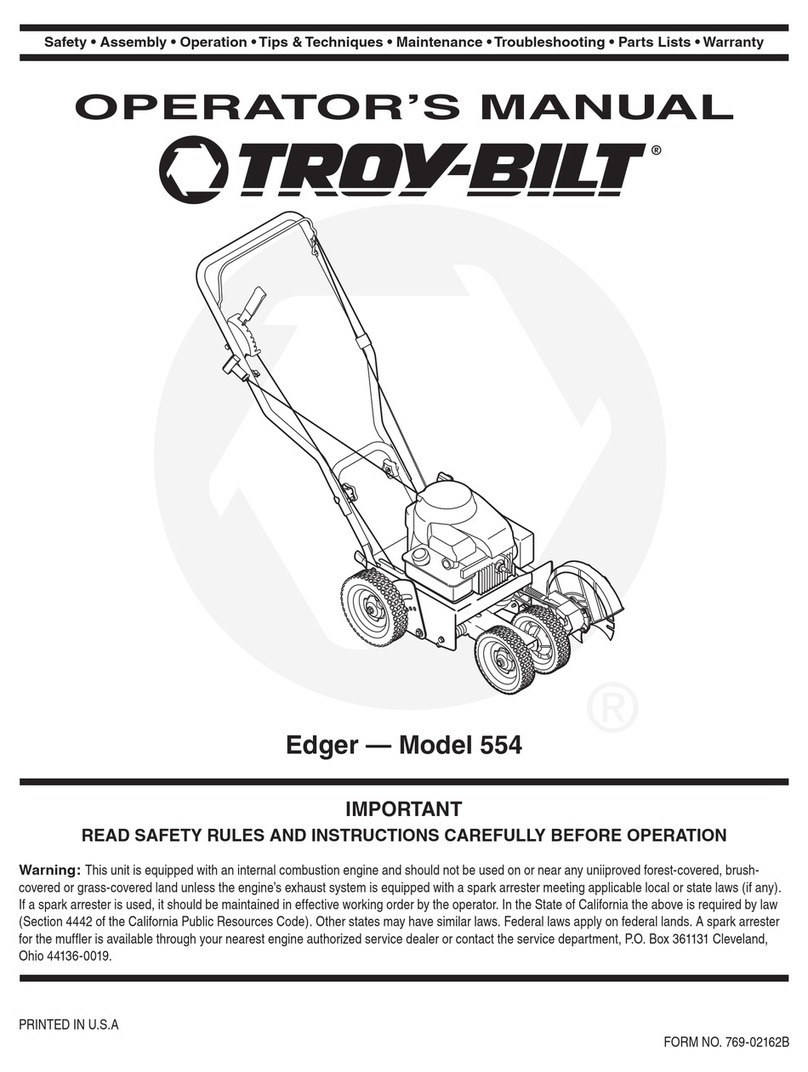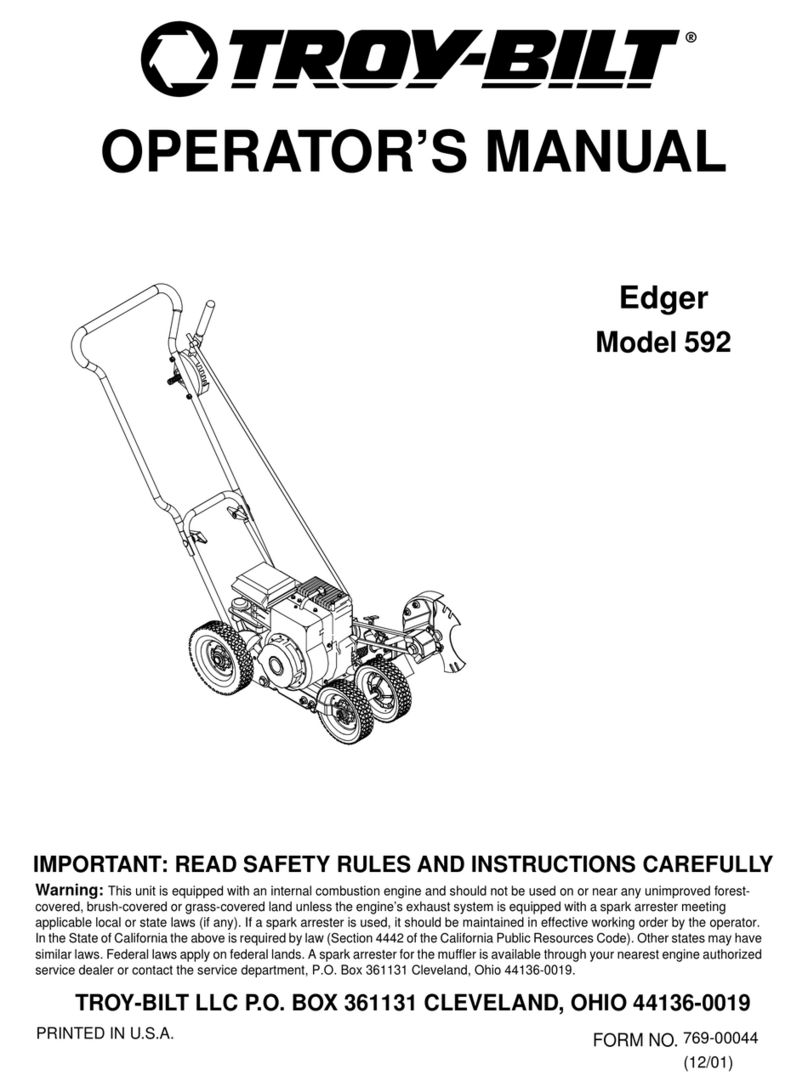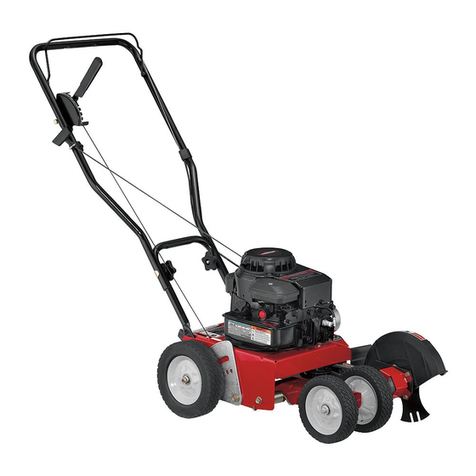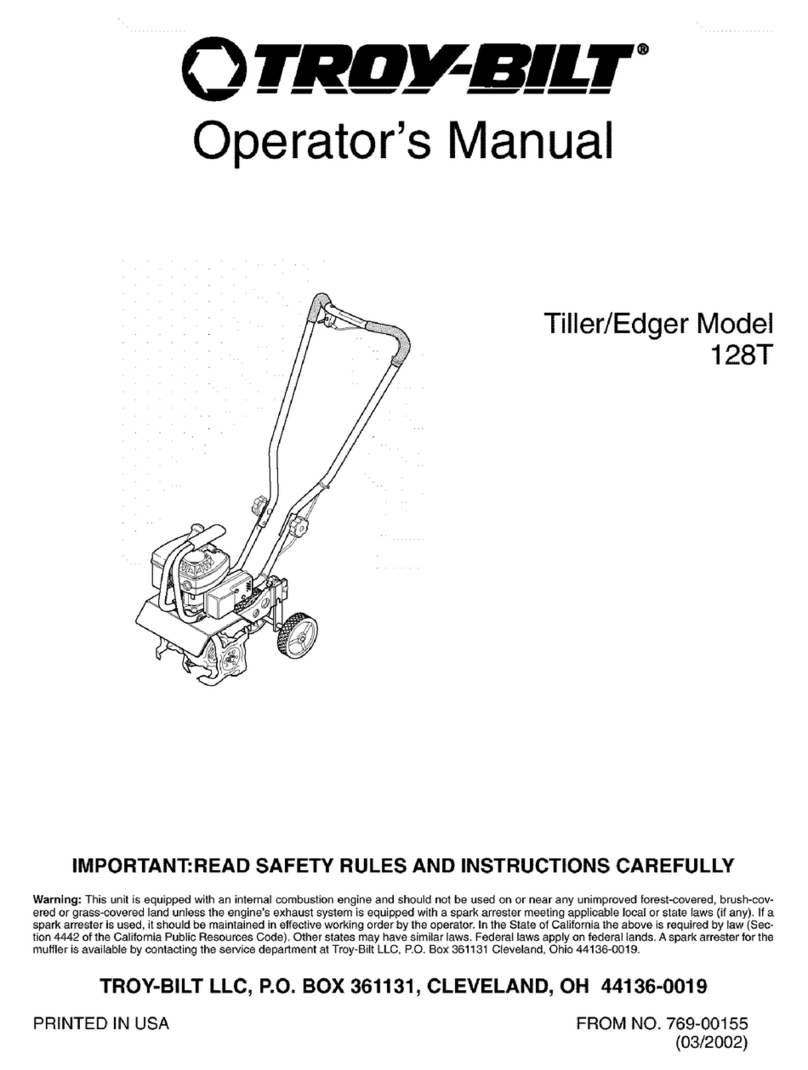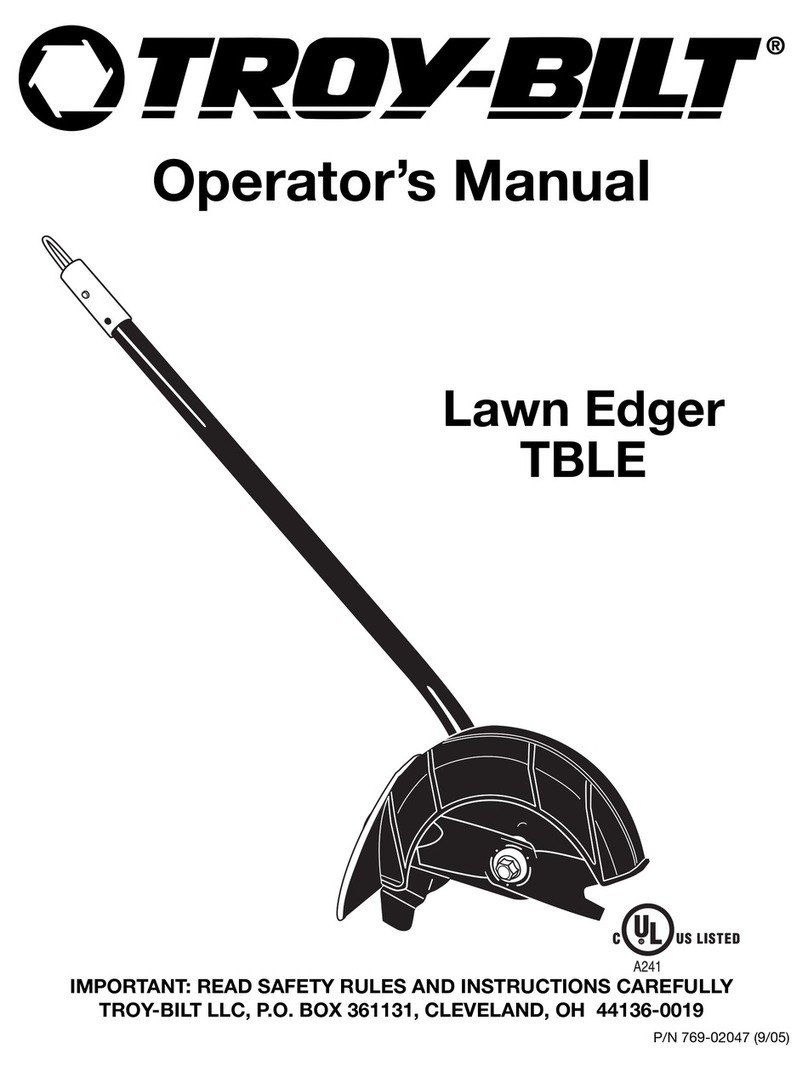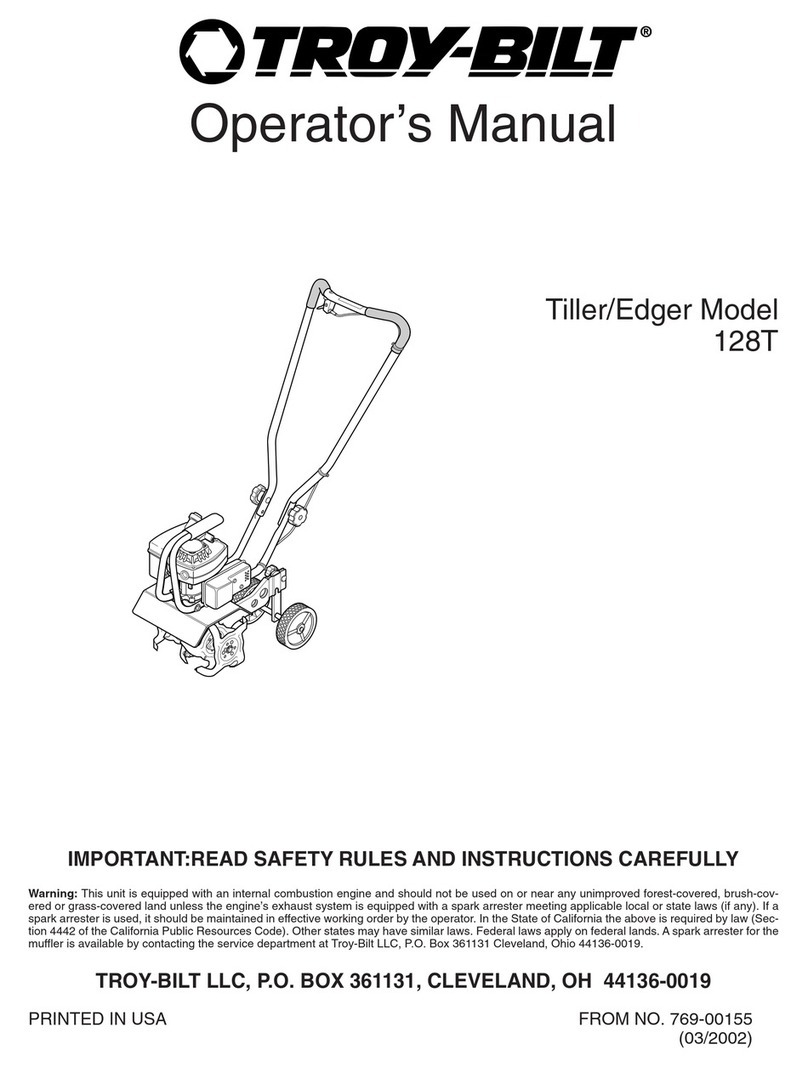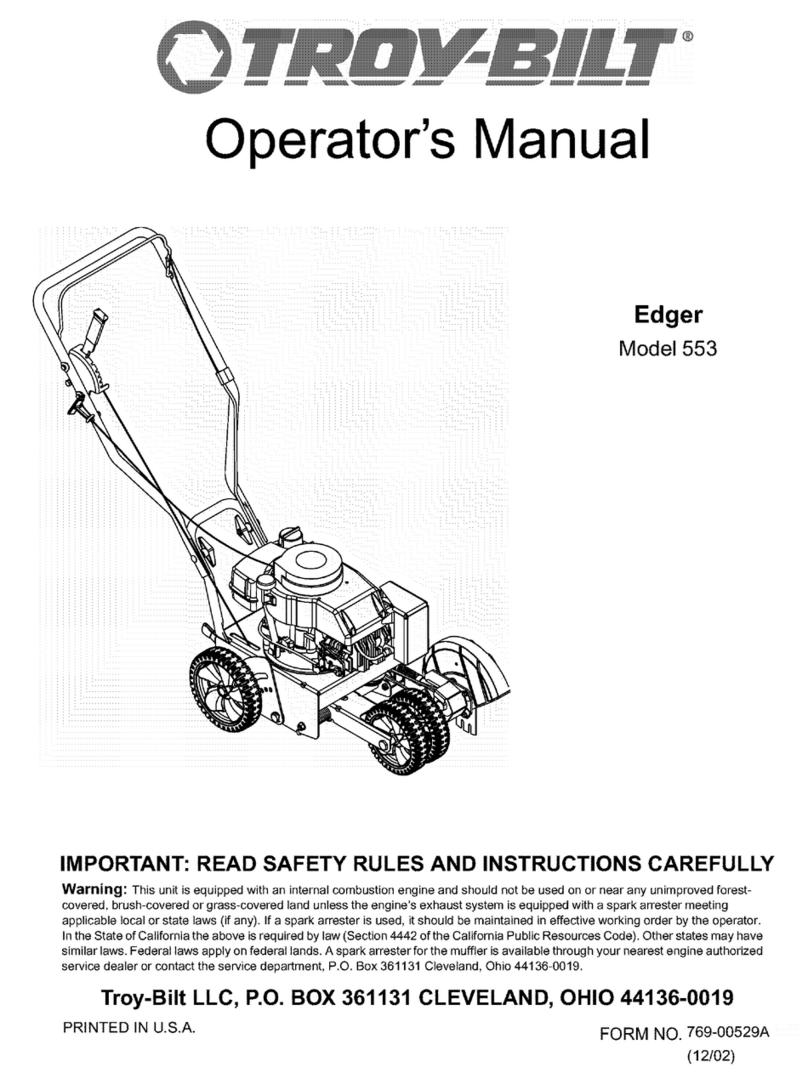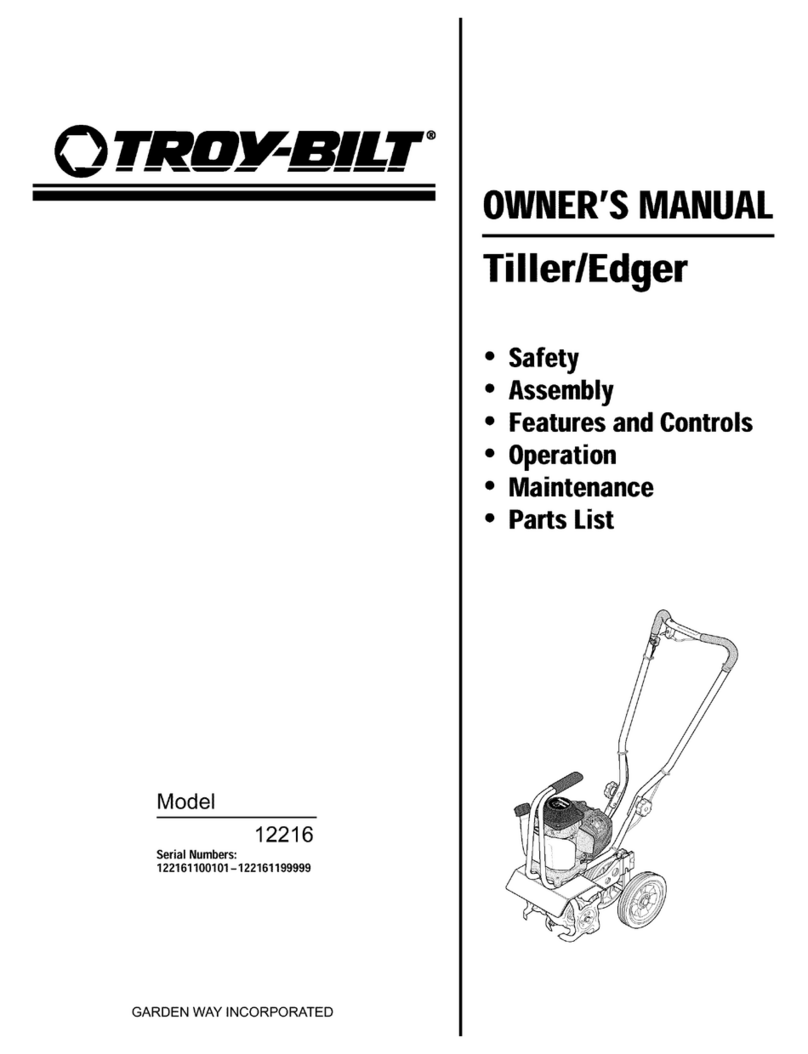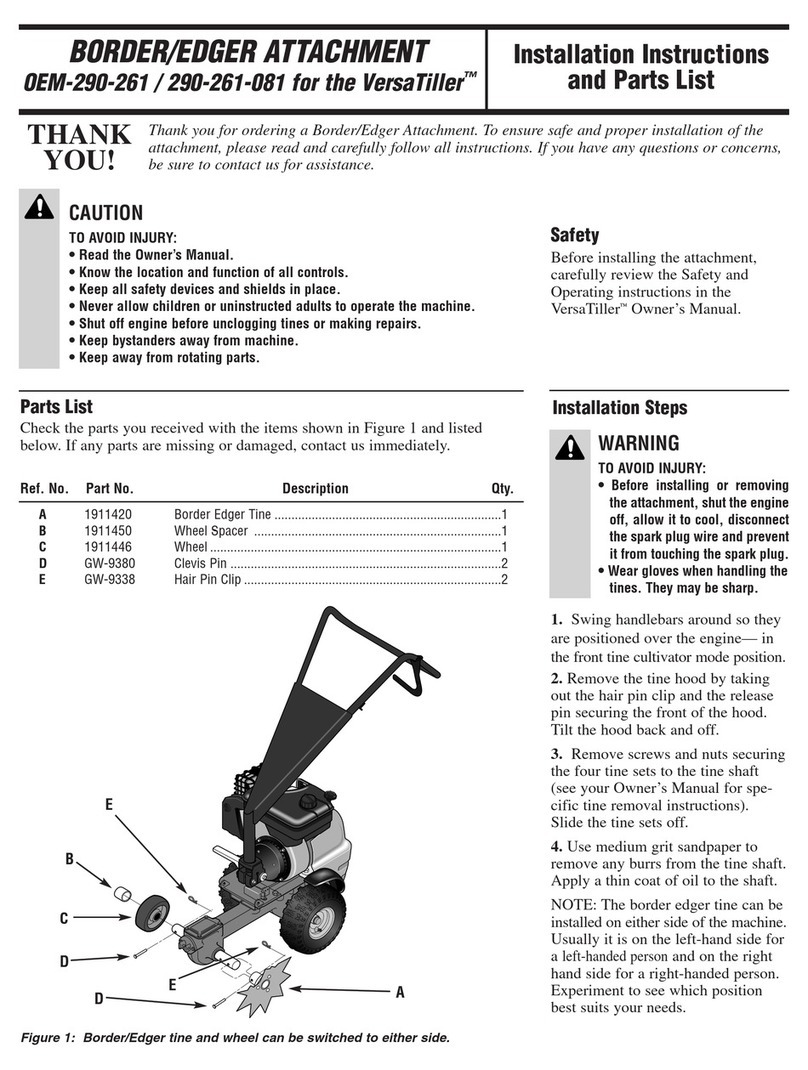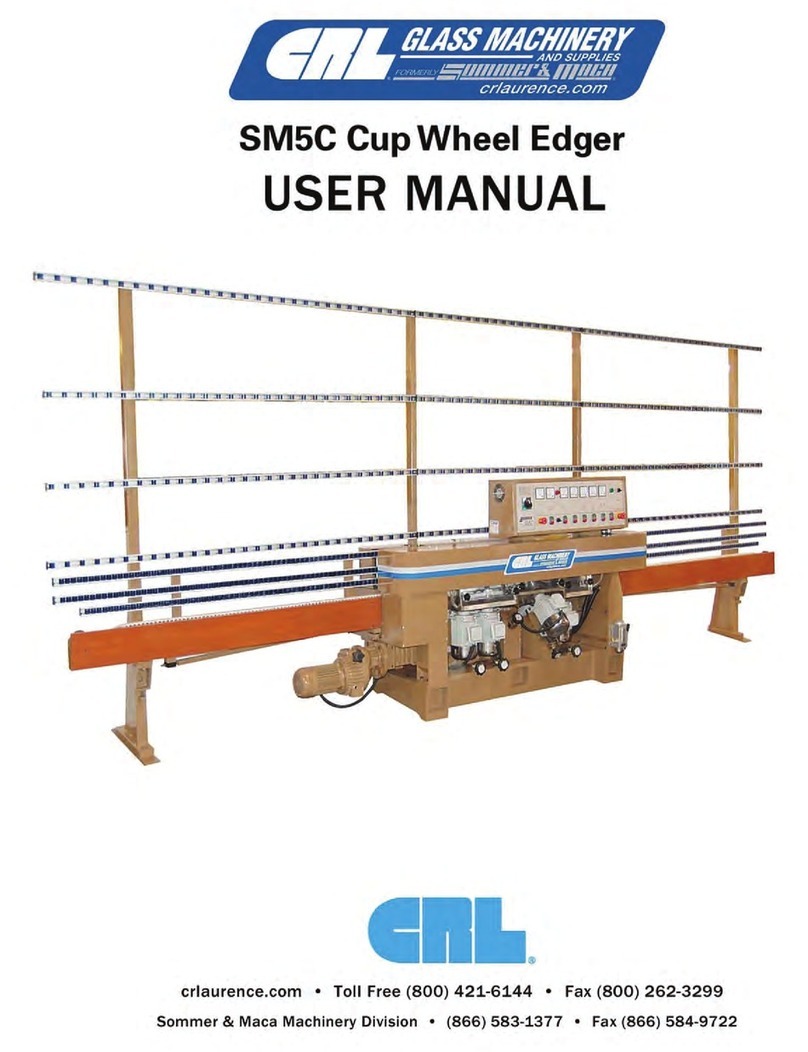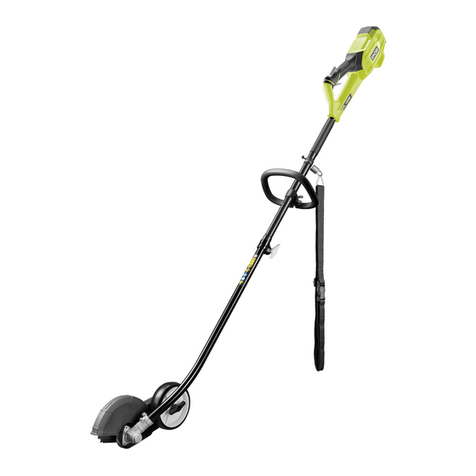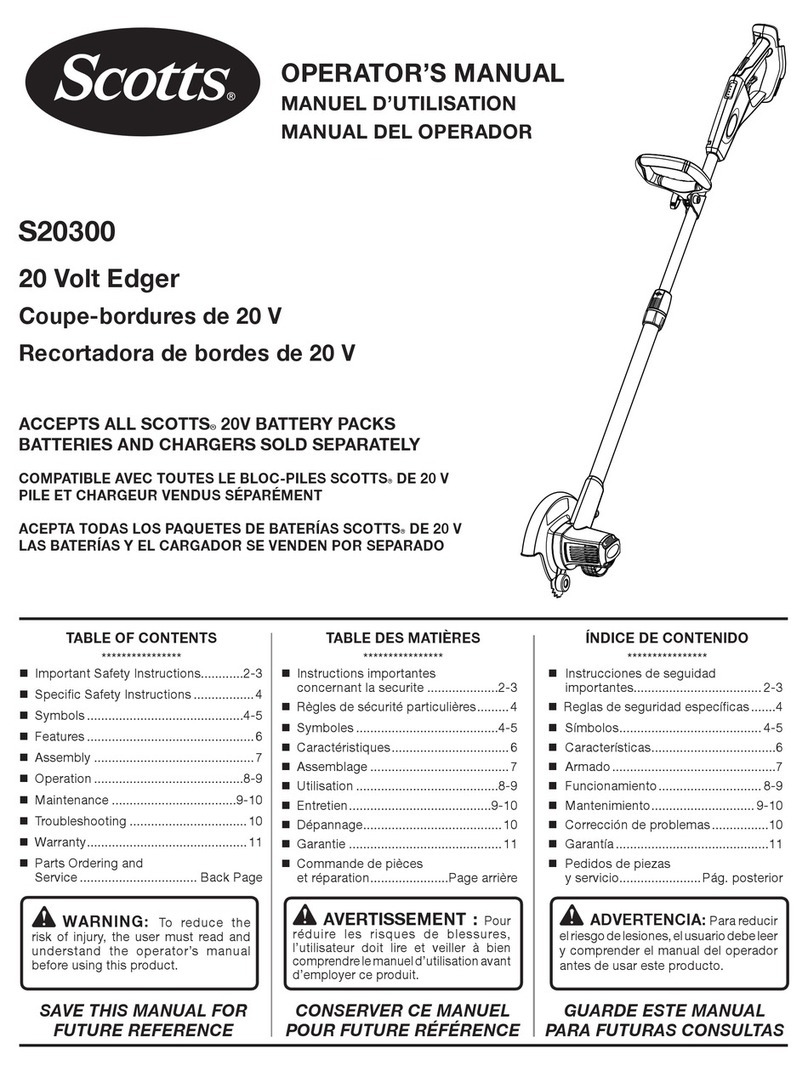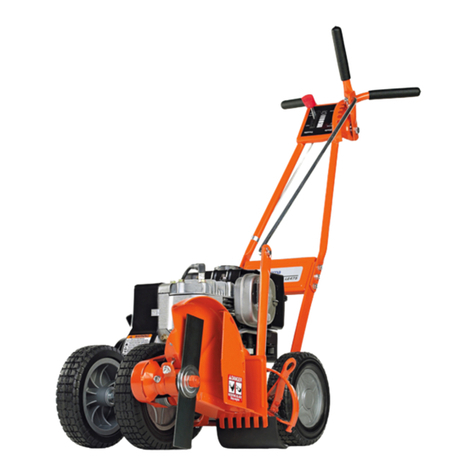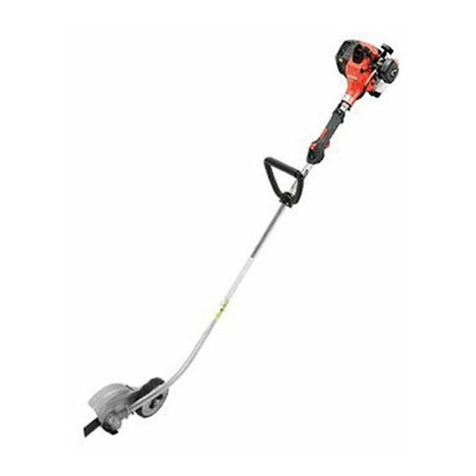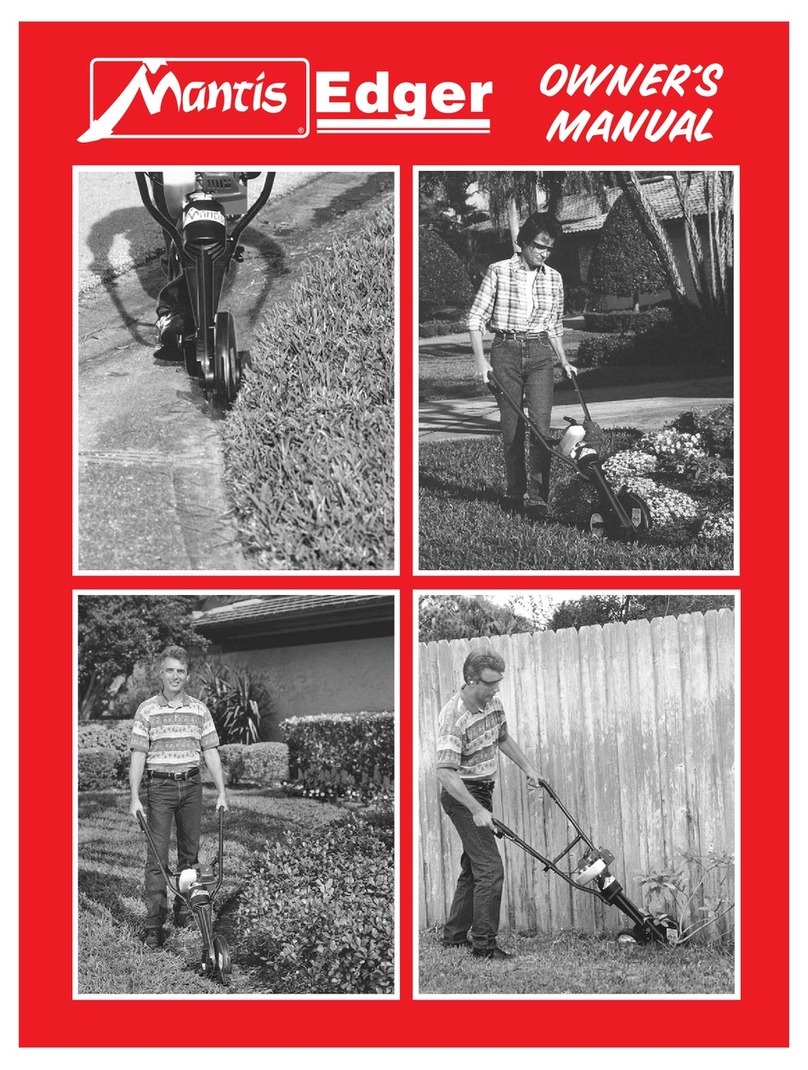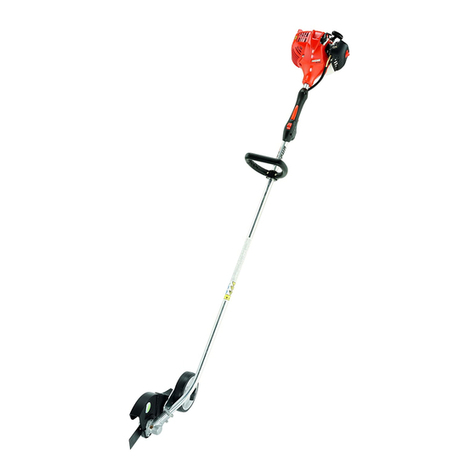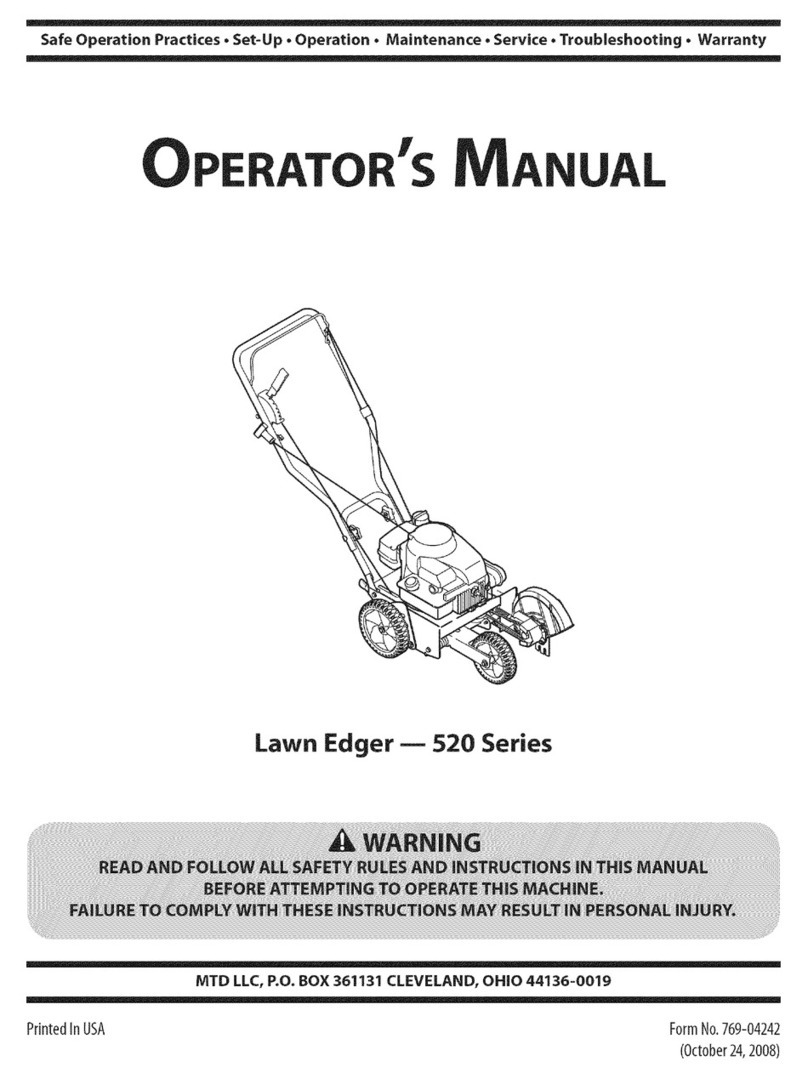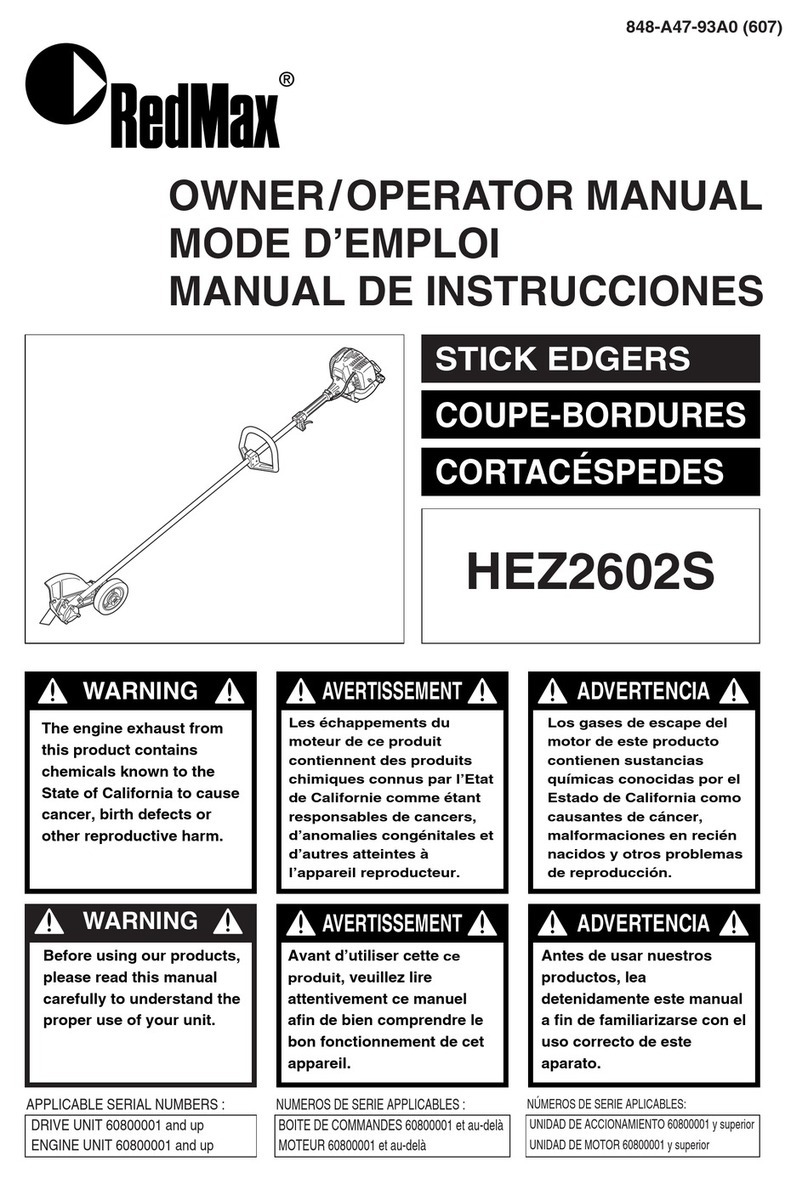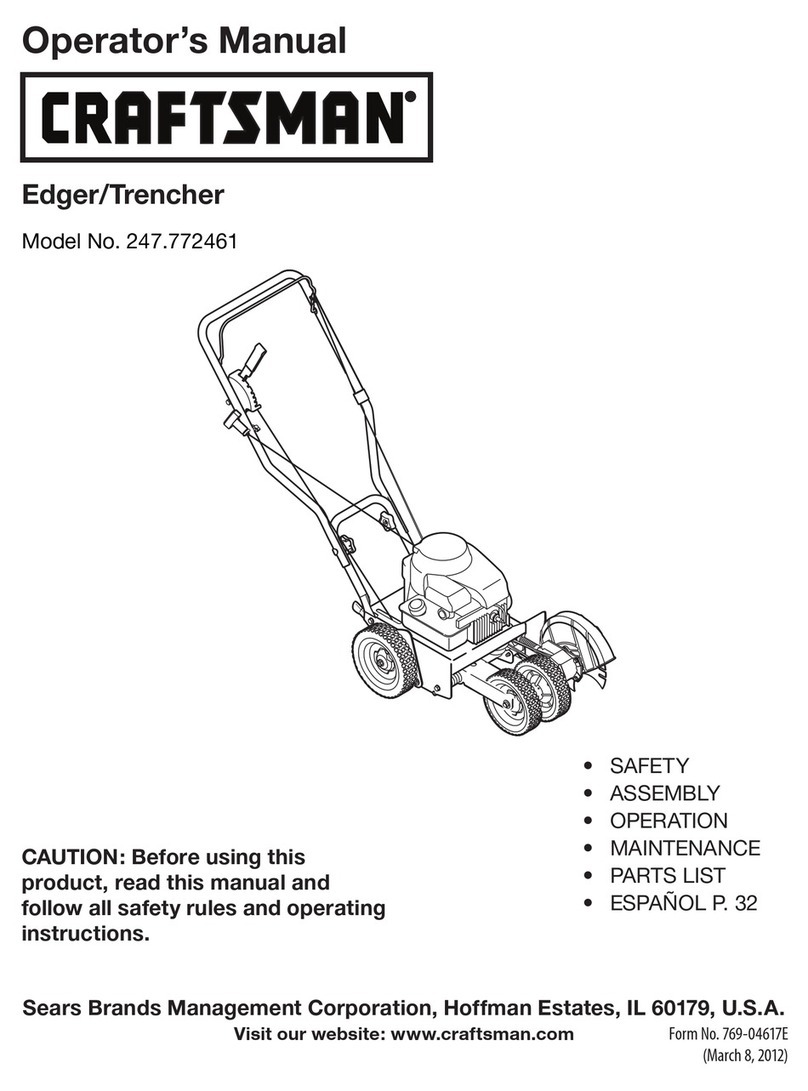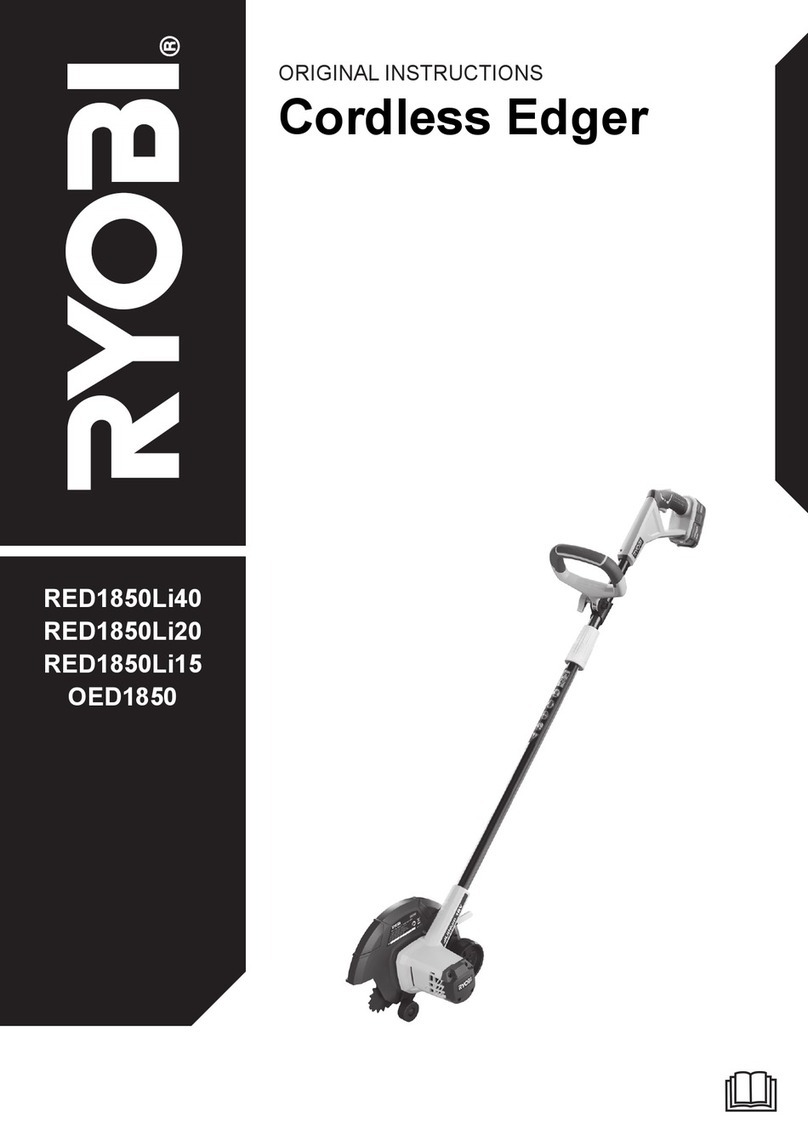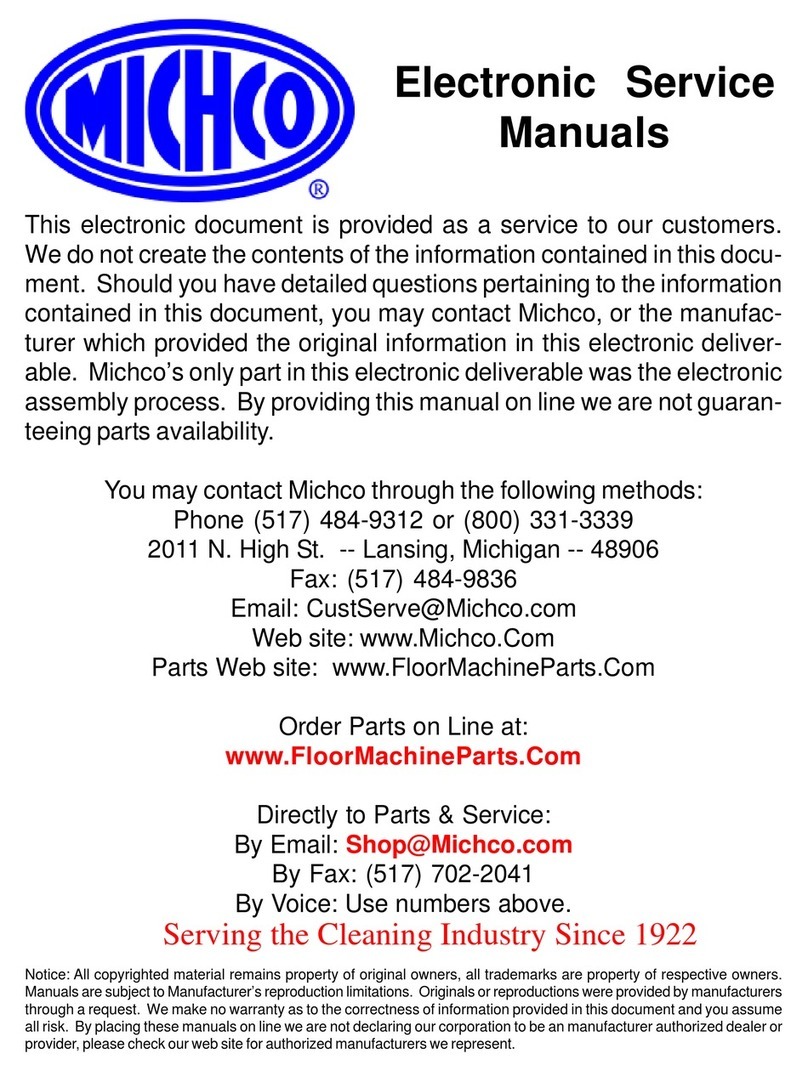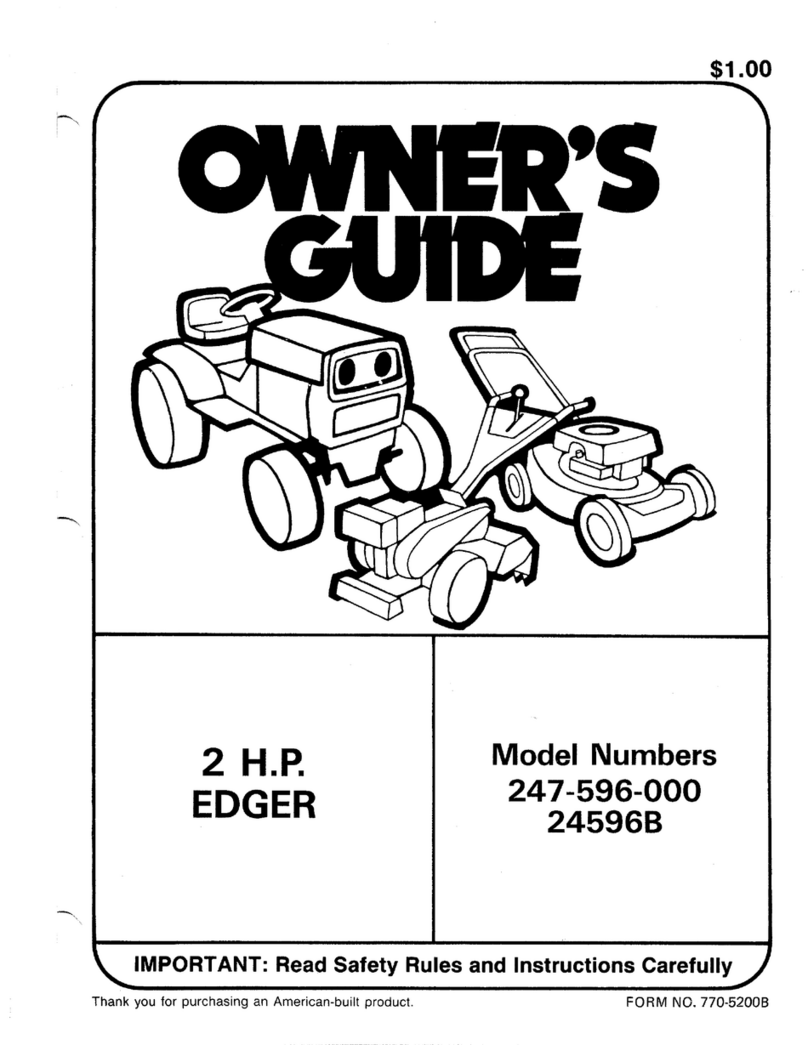2
•
Do not overreach, take extra care when working on steep slopes
or inclines. Always keep proper footing and balance.
• Always hold the unit with both hands when operating. Keep a
firm grip on the handle.
• Keep hands, face, and feet at a distance from all moving parts.
Do not touch or try to stop the blade when it is rotating. Do not
operate without guards in place.
• Do not operate the engine faster than the speed needed to do
the job. Do not run the engine at high speed when not in use.
• Always stop the engine/motor when operation is delayed or
when walking from one location to another.
• Stop the engine/motor for maintenance, repair, to install or
remove the blade. The unit must be stopped and the blade
no longer turning to avoid injury.
• The blade may become very sharp from use. Always wear heavy
gloves when handling, removing, installing or cleaning the blade.
•
If you strike or become entangled with a foreign object, stop the
engine/motor immediately and check for damage. Have any
damage repaired before attempting further operations. Do not
operate unit with a bent, cracked or dull blade. Discard blades
that are bent, warped, cracked or broken.
• Stop the unit IMMEDIATELY if you feel excessive vibration.
Vibration is a sign of trouble. Inspect thoroughly for loose nuts,
bolts or damage before continuing. Repair or replace affected
parts as necessary.
• Stop and switch the unit to off for maintenance, repair, or for
changing add-ons or other attachments.
•
Keep unit clean of vegetation and other materials. They may
become lodged between the blade and guard.
• A coasting blade can cause injury while it continues to spin
after the unit is stopped. Maintain proper control of the unit
until the blade has completely stopped rotating.
• Use only genuine factory replacement parts and accessories for
this unit. These are available from your authorized service dealer.
Use of any unauthorized parts or accessories could lead to serious
injury to the user or damage to the unit, and void your warranty.
MAINTENANCE AND STORAGE
• Allow the unit to cool before storing or transporting. Be sure
to secure the unit while transporting.
• Store the unit in a locked up and dry or high and dry place to
prevent unauthorized use or damage, out of the reach of children.
• Clean the blade with a hose and water. Wipe the blade with
light machine oil to prevent rust.
• Never douse or squirt the unit with water or any other liquid. Keep
handles dry, clean and free from debris. Clean after each use.
• Keep these instructions. Refer to them often and use them to
instruct other users. If you loan someone this unit, also loan
them these instructions.
• Only qualified personnel should perform any repairs or
maintenance procedures that are not described in this manual.
• Check shear bolts, engine mounting bolts and other bolts at
frequent intervals for proper tightness to be sure the
equipment is in safe working condition.
• Inside a building store the machine away from ignition sources.
Allow the engine to cool before storing in any enclosure.
• Always refer to the Operator’s Manual instructions for important
details if the lawn edger is to be stored for an extended period.
• Do not attempt to repair the machine unless you have the
proper tools, and instructions for disassembly and repair of
the machine.
SAVE THESE INSTRUCTIONS
READ ALL INSTRUCTIONS BEFORE OPERATING
• Carefully read and understand the operator's manual of the
unit that powers this attachment.
• Read this operating instruction manual carefully. Be
thoroughly familiar with the controls and the proper use of
the equipment. Know how to stop the unit and disengage the
controls quickly.
• Do not operate this unit when tired, ill, or under the influence
of alcohol, drugs, or medication.
• Never allow children to operate the equipment. Never allow
adults unfamiliar with the instructions to use the unit. Never allow
adults to operate the equipment without proper instruction.
• All guards and safety attachments must be installed properly
before operating the unit.
• Inspect the unit before use. Ensure the blade is installed
correctly and secure.
• Clear the area to be edged before each use. Remove all objects
such as rocks, broken glass, nails, wire, or string which can be
thrown or become entangled in the edging attachment.
SPECIAL SAFETY WARNINGS FOR LAWN EDGERS
• Store fuel only in containers specifically designed and
approved for the storage of such materials.
• Always stop the engine and allow it to cool before filling the fuel tank.
Never remove the cap of the fuel tank, or add fuel, when the engine
is hot. Never operate the unit without the fuel cap securely in place.
Loosen the fuel tank cap slowly to relieve any pressure in the tank.
• Add fuel in a clean, well-ventilated area outdoors where there
are no sparks or flames. Slowly remove the fuel cap only after
stopping engine. Do not smoke while fueling. Wipe up any
spilled fuel from the unit immediately.
• Avoid creating a source of ignition for spilled fuel. Do not
start the engine until fuel vapors dissipate.
• Move the unit at least 30 feet (9.1 m) from the fueling source and
site before starting the engine. Do not smoke. Keep sparks and
open flames away from the area while adding fuel or operating
the unit.
• Never start or run the unit inside a closed room or building.
Breathing exhaust fumes can kill. Operate this unit only in a
well ventilated area outdoors.
WHILE OPERATING
• Keep bystanders, especially children and pets, at least 50 ft
(15 m) away.
• Wear safety glasses or goggles that are marked as meeting ANSI
Z87.1 standards, and ear/hearing protection when operating this
unit. Wear a face or dust mask if the operation is dusty.
• Wear heavy, long pants, boots, gloves and a long sleeve shirt.
Do not wear loose clothing, jewelry, short pants, sandals or go
barefoot. Secure hair above shoulder level.
• Use the unit only in daylight or good artificial light.
•
Use the right tool. Only use this tool for the purpose intended.
• Do not force unit. It will do the job better and with less
likelihood of injury at a rate for which it was designed.
•
Use extreme caution when reversing or pulling the unit towards you.
• IMPORTANT SAFETY INSTRUCTIONS •
RULES FOR SAFE OPERATION
WARNING: When using the unit, the safety rules
must be followed. For your own safety and that of
bystanders, please read these instructions before
operating the unit. Please keep the instructions
safe for later use.
WARNING: Gasoline is highly flammable, and
its vapors can explode if ignited. Take the
following precautions:
